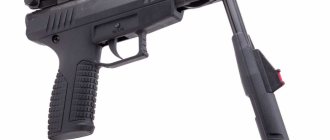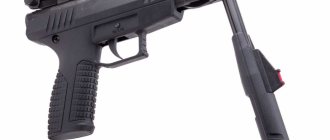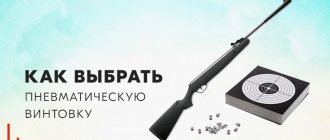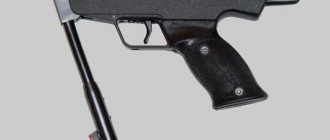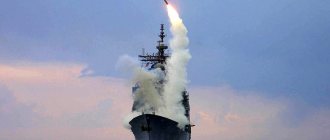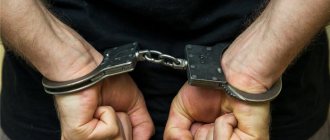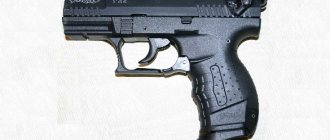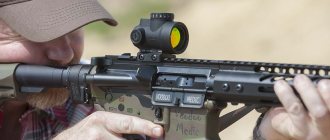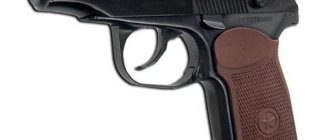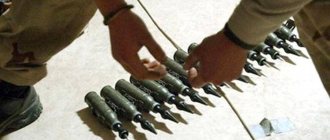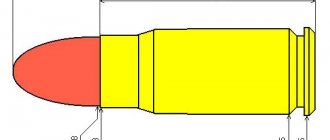A resident of absolutely any state must remember that he is responsible for his own security and his safety is solely in his hands. To carry out your own protection, the first thing that comes to mind is the use of certain pistols. It would be good if this pistol was of a casual nature or traumatic. But even these types of weapons are quite difficult and are strictly prohibited to have without a license. Buying a gas pistol for self-defense without a license is quite easy and simple in absolutely every city in a country like Russia. Let's look at a lot of pretty interesting topics.
What is a gas gun
As a rule, a gas weapon is a weapon that fires using the energy of compressed gas (CO2, nitrogen, air). This category includes pneumatic and airsoft models. There is another type of weapon - gas pistols, which themselves shoot gas. Their design does not contain a reservoir with a compressed gaseous mixture. Even some traumatic models can shoot gas.
Each type of gas weapon has its own operating principle and its own projectiles. Pneumatic guns fire lead bullets or steel balls. Some traumatic pistols use gas cartridges along with rubber bullets. Airsoft guns shoot plastic balls. Gas guns fire tear gas.
Each projectile has its own characteristics (speed of departure from the barrel, muzzle energy, penetrating or paralytic force). Pneumatics with PCP pumping shoot the hardest. The weakest penetrating force is found in plastic airsoft balls. When a gas pistol is fired, gas will spray out of the barrel.
Types of gas weapons and operating principle:
- Compression. Pressure is created by pumping air once. Before firing, the lever is manually cocked. As the piston moves, it increases the air pressure in the reservoir. When you press the trigger, the valve opens, and the air flow rushes into the barrel and pushes the projectile out. To fire the next shot, another air pump is needed. The firing power is the same. The bullet flies out at a speed of 150-200 m/s.
- Multi-compression. The pressure is created by repeatedly pumping air (the lever is manually cocked several times). The power of the shot depends on the fullness of the pneumatic chamber. When firing, compressed air pushes the bullet out of the barrel. The projectile exit speed reaches 300 m/s.
- Pre-pumping (PSP or PCP). The pressure in the tank is created by pre-pumping. Gas (air, nitrogen) is pumped into the pneumatic chamber not with a lever, but with the help of a compressor or a scuba tank. High pressure is created inside the tank (up to 200-300 atmospheres). At the outlet of the pneumatic chamber, the pressure is reduced thanks to the reducer. The power of the shot is constant, but with high gas consumption it decreases. The bullet flies out of the barrel at a speed of 350 m/s. The pumping is enough for 20-80 shots (depending on the volume of the chamber).
- Gas cylinders for CO2. They work on a can of liquefied carbon dioxide. Disposable cylinders weigh 8,12,88 grams. The used canister can be replaced with a new one. Some guns have reservoirs that are charged by a fire extinguisher. When firing, the pressure in the cylinder decreases. The more discharged the tank, the weaker the power. The initial speed of a bullet leaving the barrel is 150-250 m/s.
- With cartridge pumping. The projectile itself consists of a reservoir of compressed air and a bullet. A hand pump is used for inflation. Air is pumped into the cartridge case through the charging valve. A pressure of up to 200 atmospheres is created in the tank. At the moment of firing, air comes out through the release valve and pushes the bullet out. The projectile flies at a speed of 200-300 m/s.
- With a cartridge containing irritant or tear gas. Pistols operate by cocking and the movement of a recoil spring. They shoot not a bullet, but tear gas, which is sprayed 3 meters away.
IZH-76 8mm
One of the first models of Russian gas weapons. It is known abroad under the following marking – IZH-76. The plant's specialists used Reck G5 (Perfecta Mod. FB1 8000) as a basis. This is a low-power German-made pistol, which, according to consumer reviews, can only scare a person unfamiliar with weapons.
The Izhevsk model is also not far from the prototype in this regard, and therefore has many negative reviews:
- The handle is uncomfortable and small. A grown man simply cannot shoot with it.
- The bolt is shaky and causes frequent misalignment of the cartridge when fired.
- The trigger has too short a stroke - about 2 mm. The shot always occurs unexpectedly not only for the attacker, but also for the owner himself.
- The barrel is short, which is why the shooter himself gets caught in the gas cloud.
That's why it was taken out of production so quickly (produced 1994-1996). True, you can still find this model on sale for a couple of thousand rubles.
Among the positive aspects, they note the small weight - 500 grams, and compact dimensions - the length of the pistol is only 135 mm.
Story
The first models of domestic gas pistols were created in Izhevsk at the IMZ. Such weapons appeared in the early 90s of the last century. The fact is that during the Soviet Union, citizens could only train shooting skills in shooting ranges. It was impossible to buy weapons for training or self-defense.
With the collapse of the USSR, many laws changed. Citizens and organizations have the opportunity to buy weapons for sport shooting, hunting, and self-defense.
Airsoft fans received “airballs” that could be purchased without a license. For hunting, powerful pneumatic guns were developed that fire using the energy of compressed air. For self-defense, you could buy a gas pistol that sprayed an aerosol cloud of tear gas at the moment of firing. Traumatic modifications have appeared that fire not only rubber bullets, but also gas cartridges.
General characteristics of aerosol guns
This is a type of weapon equipped to fire tear gas. It shoots natural or artificial pepper concentrate or a mixture of gas and concentrate in a specific proportion. A small-sized canister projectile (BAM) in which pyroelectric detonation of the charge occurs.
Pistols have a high destructive power. From a distance of 3-5 meters, you can eliminate the enemy threat if you hit the head. The action of the component that the weapon fires is expressed in profuse salivation and tearing, and a burning sensation. The aggressor, animal or human, is neutralized for twenty to thirty minutes. However, there will be no serious harm to health.
Such pistols are similar in appearance to real weapons, but they do not have a barrel. They are called "barrelless weapons for self-defense."
By design they are divided into pistols:
- with one charge and many charges;
- single-barrel and multi-barrel;
- with laser sight;
- firing pepper and tear gas, noise and signal cartridges.
Design features
There are several types of gas weapons. Each modification has its own device. For example, pneumatic models have a barrel connected to an air chamber. The tank or cylinder contains compressed gas. An exhaust valve is installed between the barrel and the air chamber, which opens at the moment of firing (when the trigger is pressed).
At the top of an air or airsoft pistol is the bolt carrier and barrel. At the bottom is a pistol grip into which a magazine with shells or a gas cylinder is inserted. The shot is fired using the trigger. Externally, such models can be difficult to distinguish from military weapons.
All pneumatic modifications have a reservoir or cartridge of compressed gas. The fact is that when fired, it is the air that pushes the bullet out of the barrel. The projectile, overcoming the force of friction, flies out under the influence of the air flow. At the moment of firing, the pressure of the compressed air in the tank decreases.
The cocking system in pneumatics can be manual (for compression models) or automatic (for gas-cylinder modifications). USM is incomplete. The firing mechanism is often a trigger that opens the exhaust valve. Some pneumatic models have a safety lock that blocks the possibility of an accidental shot.
Pneumatic modifications can be single-shot or multi-shot (with a magazine for several projectiles). In self-loading models, ammunition is sent into the chamber automatically.
The structure of a gas pistol that shoots gas is somewhat reminiscent of a military weapon. True, changes have been made to the design to eliminate the use of a live cartridge. Such models have a cocking system, a trigger, a trigger, a barrel with a spring, a pistol grip, into which a magazine with shells is inserted.
How to choose the best pistol for self-defense without a license
There are many weapons for self-defense, so choosing is a whole process. Due to the fact that the market offers a lot of different models, a person does not have to purchase a weapon that requires a permit. Of course, such a device will be inferior in power, but it will easily protect a person when necessary. Pistols and other devices that do not require a license:
- traumatic weapon with a power of up to 100 m/sec;
- gas cartridges;
- low power stun guns;
- pneumatic weapons with a caliber of up to 4.5 mm and a power of up to 100 m/sec.
When the type of weapon for self-defense is determined, it is important to understand how to choose the right device for yourself. First, a person must decide what he expects from a weapon for self-defense. If it is enough for him to simply have an object that will come to the rescue in case of close contact with an attacker, then it is better to choose an aerosol, gas revolver or a stun gun designed in the form of a pistol. To hit the enemy at a long distance, a pneumatic or traumatic weapon is suitable, but not very powerful, so that licensing is not required. Criterias of choice:
- Type of weapon.
- Price.
- Size.
- Efficiency.
- Characteristics.
Having considered the main parameters of choice, you should pay attention to minor nuances. If the device is compact, it will not cause inconvenience while wearing. When buying a pistol, you should study the package contents of the product. It is important that it is accompanied by a passport and a quality guarantee. Some devices are best carried in a holster, so if it is included in the kit, then this will be a significant plus. The device must guarantee trouble-free and reliable operation.
An equally important indicator is ease of maintenance. Self-defense weapons are often purchased by beginners who do not know how to use such items. Therefore, ease of disassembly and cleaning is a good advantage. The last factor, but no less important than the rest: the design and material of manufacture. Experts have found that high-quality plastic is much more reliable than aluminum. Therefore, it is better to purchase devices that combine plastic and steel parts.
Ammunition markings
Types and markings of projectiles:
- lead bullets (for pneumatics) - JSB Diabolo 4.5/5.5, Gamo 4.5/5.5, H&N Baracuda 4.5/5.5;
- steel balls (for pneumatics) - Umarex Steel BB 4.5/5.5, Crosman BB 4.5/5.5;
- plastic balls (for airsoft) - BBs, BLS;
- pumped cartridges (for pneumatics) - Saxby & Palmer;
- cartridge containing irritant gas (for civilian and traumatic weapons) - Gaspatronen-Cal. 8/9 mm, Teren-3 8/9 mm, Gas cartridge CN/CS.
Model 79
This version needs to be considered in more detail than all of the above, since the 79th IZH is the most common model of gas weapons in the country. The famous PM (Makarov, in service with the armed forces and law enforcement agencies) was chosen as the prototype for the 79 series. IZHMASH engineers retained almost the entire design and operating principle of military weapons. In essence, the gas model is the same PM combat pistol, with one exception - the inability to fire live ammunition. Available in four modifications: IZH-79-8, IZH-79-9, IZH-79-9T (Makarych), IZH-79-9T 10M.
As you noticed, the 79-9T model has its own name “Makarych”, thanks to this, all injuries and gas injuries based on PM began to be called that.
The weapon is self-cocking, the clips hold 8 rounds, like the original, with the exception of the latest modification - its magazine holds 10 rounds.
All working main parts are made of weapon steel, which makes Makarych one of the most reliable gas pistols in the world.
Has the following performance characteristics:
- Caliber – 7.6, 8 mm. Supplied for export in 8x20 mm.
- Effective firing range: gas - up to 3 meters, rubber bullet - up to 7.
- The clip contains 8/10 rounds.
- Dimensions: length – 161, width – 30.5, height – 127 mm, respectively.
- Weight with a full charge – 730 g.
Safety
The plant engineers made sure that it was impossible to fire live ammunition from the Makarych. For this purpose, there is a pressed-in bushing in the barrel; it makes it impossible to convert a standard barrel for a combat charge. Also, the breech on the outside has small cuts, and the attachment of the barrel to the frame, compared to the original, is weakened. All this together, when trying to fire a live charge, tears the pistol into pieces. In this case, the shooter may receive serious injuries to the hand.
In addition, such “modernizations” of a gas pistol are illegal and are punishable by law.
Disassembly
Partial and complete disassembly is possible. The first is used for routine maintenance of the weapon, for example, for cleaning after shooting. Complete disassembly is recommended for repairs or when the gun has been in a damp environment for a long time - in water, rain or snow.
Carrying out partial disassembly:
- We take out the clip. We inspect the chamber for the presence of ammunition - lower the flag, move the bolt back and set it to delay.
- Separate the shutter from the frame. This is done like this: pull back the trigger guard and move it to the right. Then you need to rest it against the frame and fix it in this position. Afterwards, the bolt must be moved to the rearmost position and lifted by the rear end. We pull until we feel that the spring begins to pull it forward. The shutter is separated.
- Remove the return spring from the barrel.
Partial disassembly completed. We carry out assembly in reverse order.
First of all, we carry out incomplete disassembly. After which, for complete disassembly, the algorithm of our actions should be as follows:
- We unscrew the screw from the handle to remove the latter from the frame.
- This opens the valve and return mechanism. Move the valve down and remove the spring.
- Using an awl, we pry the edge of the spring from the bolt stop, after which you need to turn the sear in the trunnions until it separates and remove it together with the delay.
- We tilt the trigger forward and remove it.
- The last thing to remove is the trigger rod, hook and cocking lever.
We assemble starting from the last point in reverse order.
Unification with traumatic weapons
Some types of traumatic pistols can shoot not only rubber bullets, but also gas cartridges. Common calibers are 8 and 9 mm. Sometimes, when switching from a traumatic projectile to a gas cartridge, a special bushing is screwed into the barrel, which is used for signal bullets. The operating instructions are located in the product passport.
Popular traumatic pistols that fire rubber and gas cartridges simultaneously: IZH-78, IZH-79.
Documents required to obtain a license
For initial registration and for renewal of a license after 5 years of validity, you will need to collect the same package of documents:
- Passport of a citizen of the Russian Federation and 1 copy.
- Conclusion of the medical commission on the absence of contraindications to owning a weapon f. No. 002-О/у. and f. 003-O/u.
- Certificate of completion of a shooting training course.
- Photos: 2 pcs. size 3X4, black and white, matte.
- Application in the form established by the department.
- Bank receipt for payment of state duty in the amount of 500 rubles. (if documents are submitted in person).
Attention! Military personnel and persons discharged from the reserve are not required to undergo repeated training in shooting skills.
Advantages and disadvantages
Advantages:
- non-lethal weapon;
- can be used for self-defense and sports shooting;
- resembles a firearm (the appearance may frighten the attacker);
- low-power models are sold without a license (the use of weapons is not controlled by the state);
- psychological effect of loud shooting.
Flaws:
- will not stop a criminal armed with a firearm;
- weak power.
Model 77 8 mm
This pistol is one of the most popular Izhevsk models. Margolin's sports pistol was used as a basis. Izhevsk residents changed practically nothing. Therefore, the seventy-seventh one works on the same principle as the prototype; by the way, all the mechanisms between them are interchangeable.
Users note its reliability; all main components are made of steel. The hammer must be cocked before firing, as the weapon is not self-cocking. The magazine holds 6 rounds of 8 mm caliber. After the shot, the gas jet flies up to 3 m, which is quite enough to stop the hooligan.
True, there is a significant drawback, which somewhat reduces the popularity of the pistol; its length is 195 mm and its weight is 750 grams. This makes it impossible to carry a concealed weapon, but for a gas weapon this is one of the main requirements.
